
By Bob Hicks
Just a year ago, in this post about his reading adventures in 2009, Mr. Scatter confessed that he is a lousy keeper of lists, and therefore couldn’t report with any certainty on what he’d read in the previous twelve months. Some books, he was sure, had simply slipped in and out of his mind without leaving much of an impression. Others might have left a deep impression, but by the end of the year he couldn’t recall whether they’d made that impression in the previous calendar year or in, say, 1994.
If this seems odd, bear in mind that most of Mr. Scatter’s reading tends to be not from publishers’ current lists but from that great deep river of bookmaking that extends back through the centuries, constantly refreshing itself when anyone dips in. Books are like that. At some point they’re new, but after a certain point the good ones are simply current — or in the current. If someone reads, for instance, The Autobiography of Benvenuto Cellini for the first time in the year 2011, the experience throws that person into parallel universes: It is both 450 years old and current events. With that sort of time-traveling, no wonder Mr. Scatter gets a little scattered.
Fortunately, he has never resolved to address this shortcoming and become a resolute Marker Down of Experiences. Mr. Scatter is just not a check-listy sort of guy, and nothing can be done about it. With that in mind, here is an unreliable and certainly incomplete looking-back at his reading adventures in 2010. These ones, at least, he remembers.
CLASSICAL GAS: To his surprise, Mr. Scatter finds the pickings on this year’s classical list a little slim. With all of that literally (and literarily) great material out there, why did he avail himself of so little of it? Too busy committing journalism, perhaps: an imbalanced tradeoff.
What he did read in the category of the greats tended to be re-reading: Jane Austen‘s splendid comedy of manners Emma, for instance, which he wrote about here; and Jonathan Swift‘s calmly scabrous and weirdly fantastical Gulliver’s Travels, which he wrote about here. Both were extremely rewarding revisitations, and in a way, from opposite sides of the same English picket fence: Austen planting her little precarious paradises, Swift stripping the illusion of paradise to its bleached bones.
 Mr. Scatter also dipped into other, more obviously dippable classics here and there, treating them like appetizers before the literary banquet, or well-aged aperitifs: a few days’ recollections with Samuel Pepys or James Boswell (good list-keepers both); poems by Shelley, Coleridge, Andrew Marvell, Lorca, Yeats. One highlight of the year: discovering this superb online version of Pepys’ diary, with many excellent pop-up annotations. It’s run by Londoner Phil Gyford, and a splendid fellow he must be.
Mr. Scatter also dipped into other, more obviously dippable classics here and there, treating them like appetizers before the literary banquet, or well-aged aperitifs: a few days’ recollections with Samuel Pepys or James Boswell (good list-keepers both); poems by Shelley, Coleridge, Andrew Marvell, Lorca, Yeats. One highlight of the year: discovering this superb online version of Pepys’ diary, with many excellent pop-up annotations. It’s run by Londoner Phil Gyford, and a splendid fellow he must be.
BEWARE THE BEAST (and other fantasies): Mr. Scatter discovers that a good deal of his fiction-reading in 2010 involved novels that are often stuffed onto the “science fiction” or “fantasy” shelves of the Tastemongers Library. (Gulliver’s Travels, if the same pecking order had prevailed in the early 18th century, might have landed in the same place, and swiftly been lost in the literary shuffle.)
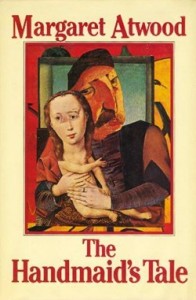 Yet, space ships and dragons aside (remember, most books in most categories, including “literary” fiction, are mediocre, although the mere presence of a spaceship or dragon is no automatic disqualifier), fantasy is a very handy place for a sharp mind to hide. Being just a little off-square from reality, or projecting just a little way into the future, allows an author the chance to write sharply and often satirically about the state of things in contemporary culture. Nineteen Eighty-Four: just 1948, with a little spin.
Yet, space ships and dragons aside (remember, most books in most categories, including “literary” fiction, are mediocre, although the mere presence of a spaceship or dragon is no automatic disqualifier), fantasy is a very handy place for a sharp mind to hide. Being just a little off-square from reality, or projecting just a little way into the future, allows an author the chance to write sharply and often satirically about the state of things in contemporary culture. Nineteen Eighty-Four: just 1948, with a little spin.
After far too long a delay, Mr. Scatter read Margaret Atwood‘s startling and morbidly beautiful 1986 novel The Handmaid’s Tale, which seems to have lost none of its contemporaneity. It’s a finely crafted work of the imagination, and all the more powerful for the plausibility of its supposition: radical religious fundamentalists have taken over a government, and women have become chattel. It happens to be the United States, and the fundamentalists happen to be Christians. But the parallels to today’s radical and fundamentalist Islam are striking, too: Who’s that lurking behind that veil?
Two Thousand Ten was also the year Mr. Scatter discovered the 1950s British science-fiction writer John Wyndham, who is best-known for his novel The Day of the Triffids, which became a popular scare-the-pants-off-you movie. Mr. Scatter began with Out of the Deeps (original British title The Kraken Wakes), which he wrote about here, and then moved on to The Midwich Cuckoos (adapted for the movies as Village of the Damned). Wyndham’s style is crisp, clipped, devoted to plot: Unlike Atwood’s complex and emotionally considered heroine, his characters are likable but pretty much mouthpieces. Smart mouthpieces, though: the pacing is swift and the writing intelligent. Instead of concentrating on the spooky aliens, who remain largely in the background, Wyndham excels at imagining how ordinary people and societies might respond to extraordinary circumstances (as if the England of the 1950s hadn’t just been through exactly that).
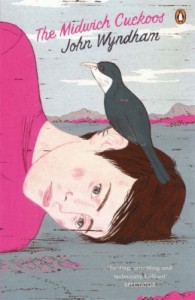 In both books, the aliens don’t attack upfront, they sneak up on you: In Out of the Deeps as a race of water-creatures who melt the polar icecaps to create an environmental devastation that also disintegrates everyday culture; in Midwich as a group of hypersmart alien children who have been mysteriously implanted in the wombs of all the childbearing-age women in an English village. Wyndham plays intriguing mind games in Midwich with the idea of group as opposed to individual emotion and intelligence, surely a concept that resonated after the enforced solidarities of wartime. In both novels a late twist staves off sure doom: after all, somebody has to be left to buy the books. The novels stay fresh partly because they’re crackling good stories that echo postwar England’s self-image as a nation of stolid, durable problem-solvers against immense odds, and partly because they seem so prescient. Wyndham’s model in Deeps of the destructive process of sudden global warming is sophisticated, and both novels play with the concept of the externalized enemy, an idea hardly unfamiliar in our post-9/11 times. It’s a little eerie to realize, in Cuckoo, that the heroic English man of action, a cultured and highly educated gentleman, is beginning to think in ways you can imagine a suicide bomber might think.
In both books, the aliens don’t attack upfront, they sneak up on you: In Out of the Deeps as a race of water-creatures who melt the polar icecaps to create an environmental devastation that also disintegrates everyday culture; in Midwich as a group of hypersmart alien children who have been mysteriously implanted in the wombs of all the childbearing-age women in an English village. Wyndham plays intriguing mind games in Midwich with the idea of group as opposed to individual emotion and intelligence, surely a concept that resonated after the enforced solidarities of wartime. In both novels a late twist staves off sure doom: after all, somebody has to be left to buy the books. The novels stay fresh partly because they’re crackling good stories that echo postwar England’s self-image as a nation of stolid, durable problem-solvers against immense odds, and partly because they seem so prescient. Wyndham’s model in Deeps of the destructive process of sudden global warming is sophisticated, and both novels play with the concept of the externalized enemy, an idea hardly unfamiliar in our post-9/11 times. It’s a little eerie to realize, in Cuckoo, that the heroic English man of action, a cultured and highly educated gentleman, is beginning to think in ways you can imagine a suicide bomber might think.
You won’t find Wyndham’s novels in the literature aisles, by the way: he’s stuck in sci/fi & fantasy, along with Tolkien and Le Guin and Bradbury and H.G. Wells and a lot of other fascinating writers deemed somehow subliterary (and also, of course, with an awful lot of hacks). What makes Atwood literary (if slumming in sci-fi) and Gabriel García Márquez a magical realist instead of a fantasist in his great novel One Hundred Years of Solitude, and Italo Calvino an experimental stylist instead of a fantasy writer? Well, partly because that’s just the way the coaches divided the team. And some genre writers are simply comfortable in their genre uniforms. Wyndham, for one, seemed to have a real feel for sci-fi and an appreciation for the structural demands of its marketplace. But if he and others have been shunted off to the sidelines, the problem is also with the referees who make the literary calls. By this time we really oughta know: Genre is far less important than scope and talent.
SPIN US A YARN: Speaking of genre-busting, Michael Chabon‘s 2000 Pulitzer-winner The Amazing Adventures of Kavalier and Clay is bustin’ out all over. Like a lot of people, Mr. Scatter is a big fan of Mr. Chabon and such novels as The Yiddish Policemen’s Union, the swashbuckling serial Gentlemen of the Road (also read in 2010) and Summerland, supposedly a children’s novel but pretty darned witty, especially if you know the San Juan Islands/Puget Sound cultures that he caricatures so adroitly. What ties all of these books together is their sense of the magical or outlandish as part of the weft of the ordinary: We’re all living inside a great big sprawling comic book, and it’s very funny and very serious at the same time. Kavalier and Clay deals with golems and the plight of Jews in Hitler’s Europe and superhero caped crusaders and the dawning of gay rights and the stark genius of American immigrancy and even that strange and mighty force called love. Chabon is no miniaturist, and sometimes his stories can get a little messy, but his imagination leaps tall buildings in a restless bound. He knows how to spin a tale, and he knows how to make you care.
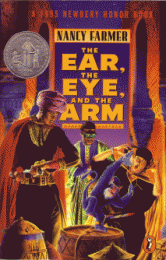 Another novel that could easily fit the sci-fi genre but instead is filed in the children’s section is 1994’s The Ear, the Eye, and the Arm, by Nancy Farmer, one of the house favorites at Chez Scatter for her Sea of Trolls trilogy (The Sea of Trolls, The Land of the Silver Apples and The Island of the Blessed), which treads the fertile space where Celtic, Christian and Norse myth intermingle and collide. The Ear, the Eye, and the Arm, set in a future, post-disaster Zimbabwe with masses of mutants, a quasi-military intelligentsia and a throwback tribal homeland where anything modern is prohibited, is tougher and more complex but splendidly imagined. And like the best speculative or fantasy work, it makes you accept its altered landscape easily as its world’s ordinary state of being.
Another novel that could easily fit the sci-fi genre but instead is filed in the children’s section is 1994’s The Ear, the Eye, and the Arm, by Nancy Farmer, one of the house favorites at Chez Scatter for her Sea of Trolls trilogy (The Sea of Trolls, The Land of the Silver Apples and The Island of the Blessed), which treads the fertile space where Celtic, Christian and Norse myth intermingle and collide. The Ear, the Eye, and the Arm, set in a future, post-disaster Zimbabwe with masses of mutants, a quasi-military intelligentsia and a throwback tribal homeland where anything modern is prohibited, is tougher and more complex but splendidly imagined. And like the best speculative or fantasy work, it makes you accept its altered landscape easily as its world’s ordinary state of being.
Portland novelist Myrlin A. Hermes did an audacious series of imaginary leaps with her 2010 novel The Lunatic, the Lover, and the Poet, turning the mysteries of Hamlet and the Dark Lady of the Sonnets on their heads and spinning them into a fascinating alternate reality. Mr. Scatter wrote about it here.
And Colum McCann‘s 2009 National Book Award winner Let the Great World Spin flexes daringly between the twin behemoths of the World Trade Center as it writes around, but not directly toward, the cataclysm of September 11, 2001. In a way it’s an old-fashioned novel, filled with merciful and benighted characters and a spiritual aching. Powerful stuff. Mr. Scatter wrote about it here, putting it in an odd dialectic with the unfortunate chattermouth Glenn Beck.
GUMSHOES & CRIMEBUSTERS: Maybe because he was engaged in so much speculative fiction, Mr. Scatter didn’t pick up too many mysteries in 2010. It’s hard enough to find a mystery that hits things just right: light, quick, intelligent, entertaining, predictable but not insulting. Something for those times when you want to rest your mind a bit but don’t want to feel like you’ve utterly wasted your time. In the past Mr. Scatter has relied on the likes of Rumpole of the Bailey, Lord Peter Wimsey, Brother Cadfael, and Arly Hanks, Joan E. Hess’s wry Ozarks policewoman.
Last year he re-read an indeterminate handful of horsey mysteries by Dick Francis, who has the advantage of being engaging while you’re reading him and sort of forgettable not long after, so if you give it a rest for a few months you can pick up one of his novels again and still get involved in the mystery because you’ve forgot the details. Mr. Scatter isn’t sure which ones he read in the past twelve months. It might have been the one about the architect, and the one about the wine merchant, and the one about the toy inventor. And sometime in the next few years, he’ll probably read them again.
Peter Temple‘s Australian novel The Broken Shore was something else again — a discovery of a genuinely interesting writer who wraps some potent observations about his country’s race relations and isolationism into a decent whodunnit structure. All that, and enough gore to let you feel the pure dumb price of evil. If you don’t already know him, he’s worth checking out.
REPORTERS & ESSAYISTS: The essay has fallen on better times. Once sniffed at in literary circles as mere journalism, it’s been dusted off and revived by a whole lot of talented writers who see no problem with being both factual and creative. Colleges now boast of their “creative nonfiction” programs, having discovered that writers who write about something might actually have a point.
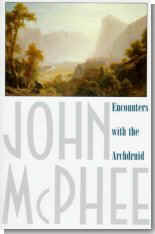 The New Yorker has certainly had a role in this renascence, and in 2010 Mr. Scatter visited the writings of a couple of its best, James Thurber and John McPhee. He reread Thurber’s memoir The Years with Ross, about the magazine’s legendary founder and editor Harold Ross, and wrote about it in this post, which discussed the curious kinship of laughter and crying. Last spring he read Silk Parachute, McPhee’s latest collection of essays, which roams suavely from the great geological chalk formations of western Europe to the superhuman qualities of his magazine’s legendary fact-checkers. Mr. Scatter reviewed it here. Then, still in a McPhee mood, he picked up 1971’s Encounters with the Archdruid, the tale of three fascinating men’s unlikely relationships with David Brower, the fierce and shambly environmental advocate: a mining engineer, a resort developer, and the guy who built gigantic dams across the parched West, flooding some of the very sites Brower held sacred. None of the important issues in the book have been resolved, and it’s remarkable how little the arguments themselves have changed. In the meantime, McPhee adeptly traces the growing, grudging admiration that develops between Brower and these adversaries, all of them honorable men devoted to their beliefs.
The New Yorker has certainly had a role in this renascence, and in 2010 Mr. Scatter visited the writings of a couple of its best, James Thurber and John McPhee. He reread Thurber’s memoir The Years with Ross, about the magazine’s legendary founder and editor Harold Ross, and wrote about it in this post, which discussed the curious kinship of laughter and crying. Last spring he read Silk Parachute, McPhee’s latest collection of essays, which roams suavely from the great geological chalk formations of western Europe to the superhuman qualities of his magazine’s legendary fact-checkers. Mr. Scatter reviewed it here. Then, still in a McPhee mood, he picked up 1971’s Encounters with the Archdruid, the tale of three fascinating men’s unlikely relationships with David Brower, the fierce and shambly environmental advocate: a mining engineer, a resort developer, and the guy who built gigantic dams across the parched West, flooding some of the very sites Brower held sacred. None of the important issues in the book have been resolved, and it’s remarkable how little the arguments themselves have changed. In the meantime, McPhee adeptly traces the growing, grudging admiration that develops between Brower and these adversaries, all of them honorable men devoted to their beliefs.
Bill Bryson‘s short book Shakespeare: The World as Stage is a droll and sensible summing-up of the best available knowledge, told with a nice balance of enthusiasm, historical context, and restraint: as enjoyable a digest on the Elizabethan world and the Bard as you’re likely to find. Mr. Scatter wrote about it here, in the unlikely context of a post about bridges and the political process. Books: A Memoir is novelist and book dealer Larry McMurtry‘s likable and gossipy ramble through his true passion, his overflowing bookstore and the collectors, antiquarians and eccentrics who inhabit the rare-book universe. The Best American Essays 2010, this time edited by Christopher Hitchens, is especially well-chosen, with several outstanding pieces, including Portland writer Brian Doyle‘s looping Irreconcilable Dissonance, a recognition of the constant possibility of divorce that keeps marriage alive. The self-descriptive collection One Word: Contemporary Writers on the Words They Love or Loathe has a lot of ho-hum entries but also at least one terrific piece of writing, Lee Martin‘s elegiac Colander, which hinges on a misunderstanding between the words “colander” and “calendar” but is really a love song to a lost childhood.
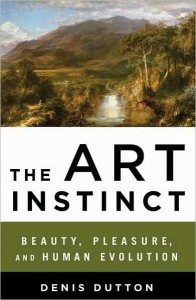 Denis Dutton‘s book The Art Instinct: Beauty, Pleasure, and Human Evolution proposes a physical and cultural anthropological approach to questions of aesthetics, and does so in an urbanely argumentative manner that Mr. Scatter found appealing. He wrote about it here. Dutton, who was also co-founder and co-editor of Arts & Letters Daily, died of cancer just a week ago. Jonathan Lopez‘s true-crime account The Man Who Made Vermeers is an outstanding piece of cultural history, encompassing anti-Semitism, mass credulity and fraud behind the veneer of Han Van Meegeren, a second-rate Dutch painter who for a time in the 1920s and ’30s fooled the world with his forgeries of Vermeer masterworks that never, in fact, existed until he dreamed them up. Coincidentally, Dutton also discusses Van Meegeren’s exploits in The Art Instinct.
Denis Dutton‘s book The Art Instinct: Beauty, Pleasure, and Human Evolution proposes a physical and cultural anthropological approach to questions of aesthetics, and does so in an urbanely argumentative manner that Mr. Scatter found appealing. He wrote about it here. Dutton, who was also co-founder and co-editor of Arts & Letters Daily, died of cancer just a week ago. Jonathan Lopez‘s true-crime account The Man Who Made Vermeers is an outstanding piece of cultural history, encompassing anti-Semitism, mass credulity and fraud behind the veneer of Han Van Meegeren, a second-rate Dutch painter who for a time in the 1920s and ’30s fooled the world with his forgeries of Vermeer masterworks that never, in fact, existed until he dreamed them up. Coincidentally, Dutton also discusses Van Meegeren’s exploits in The Art Instinct.
Mr. Scatter wrote plenty about Michael Chabon above, and is compelled to again because of Maps & Legends: Reading and Writing Along the Borderlands, Chabon’s energetic 2008 defense of entertainment as the core of good writing. The point seems self-evident to many people and blasphemous to many others. Chabon loves pop culture and the sort of vitality that can rise from pretty much anywhere, but he anchors his argument by declaring that we need to redefine and expand our “narrow, debased concept of entertainment” beyond the force-fed junk of the mass marketeers. Indeed. To carry through a theme, he is a Simon Bolivar of the genre world, liberating good writers wherever he finds them from their non-literary ghettos.
WAY OUT WEST: Ralph Friedman is a semi-forgotten chronicler of the “old” Oregon, the place that in a heartbeat changed from Indian to pioneer hands and is now found largely in the sympathetic echoes of the lonely places far from the state’s major urban areas. His books are worth seeking out, though, including A Touch of Oregon, his 1976 collection of profiles and essays on old-timers and lost places. Mr. Scatter touched on it in this essay about Salman Rushdie and fatwas and Idaho and the tension between love of the land and a larger view of life.
Novelist Rosanne Parry helped run the only writers’ workshop Mr. Scatter has ever taken part in, and he loved her bit about the Seven Deadly Sins, which boils down to: Stories arise from conflict. Conflict arises from flaws. Find the flaws and exploit them as you write. She had recently published her youth-market novel Heart of a Shepherd, which Mr. Scatter read again in 2010, aloud this time, because it’s part of Oregon Battle of the Books, a statewide school competition in which a member of the family is an enthusiastic participant. Mr. Scatter liked her slim emotion-packed novel about the travails and maturation of a young eastern Oregon ranch kid even better the second time around, and wrote about it here, in conjunction with Jane Hilton‘s photo book Dead Eagle Trail, chronicling the real lives of cowboys across the West.
 Finally, a cookbook — The Fishes & Dishes Cookbook: Seafood Recipes and Salty Stories from Alaska’s Commercial Fisherwomen, compiled by Kiyo Marsh, Tomi Marsh, and Laura Cooper. The recipes are good, but those salty stories give the book its zing. The wry, tough, practical, self-effacing, no-holds-barred, good-humored insights ( “I’m Kacy Jo. Got that nickname in a little tiny Southeast Alaska bay from some inebriated fishermen. Oh, Alaska.”) of these hard-working women make you want to know them and even think that maybe, partly, you already do. Plus, on a cold winter’s day a Fisherman’s Friend — one ounce Irish whisky, one ounce Baileys, black coffee — can make you see all the way to Russia.
Finally, a cookbook — The Fishes & Dishes Cookbook: Seafood Recipes and Salty Stories from Alaska’s Commercial Fisherwomen, compiled by Kiyo Marsh, Tomi Marsh, and Laura Cooper. The recipes are good, but those salty stories give the book its zing. The wry, tough, practical, self-effacing, no-holds-barred, good-humored insights ( “I’m Kacy Jo. Got that nickname in a little tiny Southeast Alaska bay from some inebriated fishermen. Oh, Alaska.”) of these hard-working women make you want to know them and even think that maybe, partly, you already do. Plus, on a cold winter’s day a Fisherman’s Friend — one ounce Irish whisky, one ounce Baileys, black coffee — can make you see all the way to Russia.